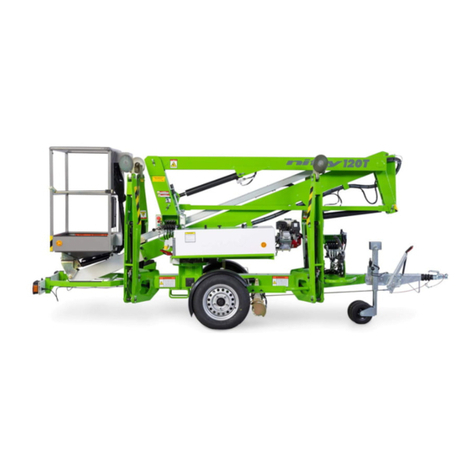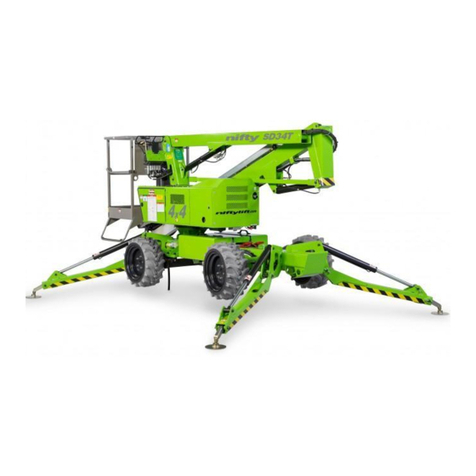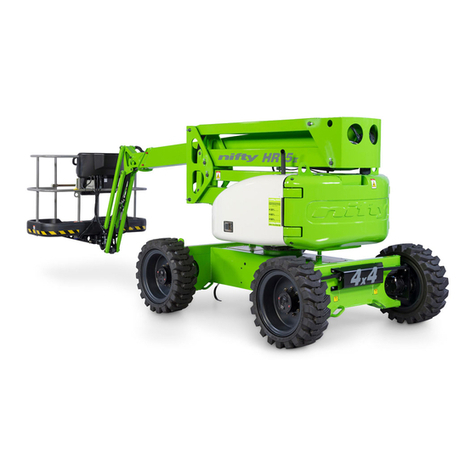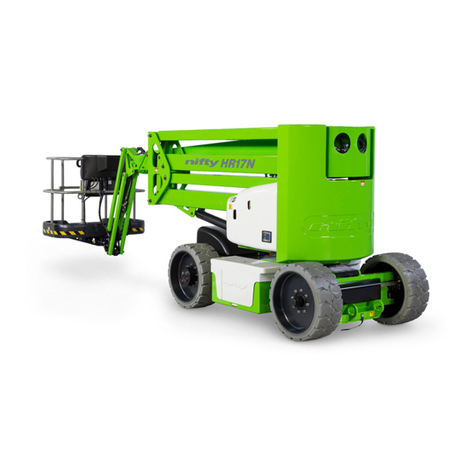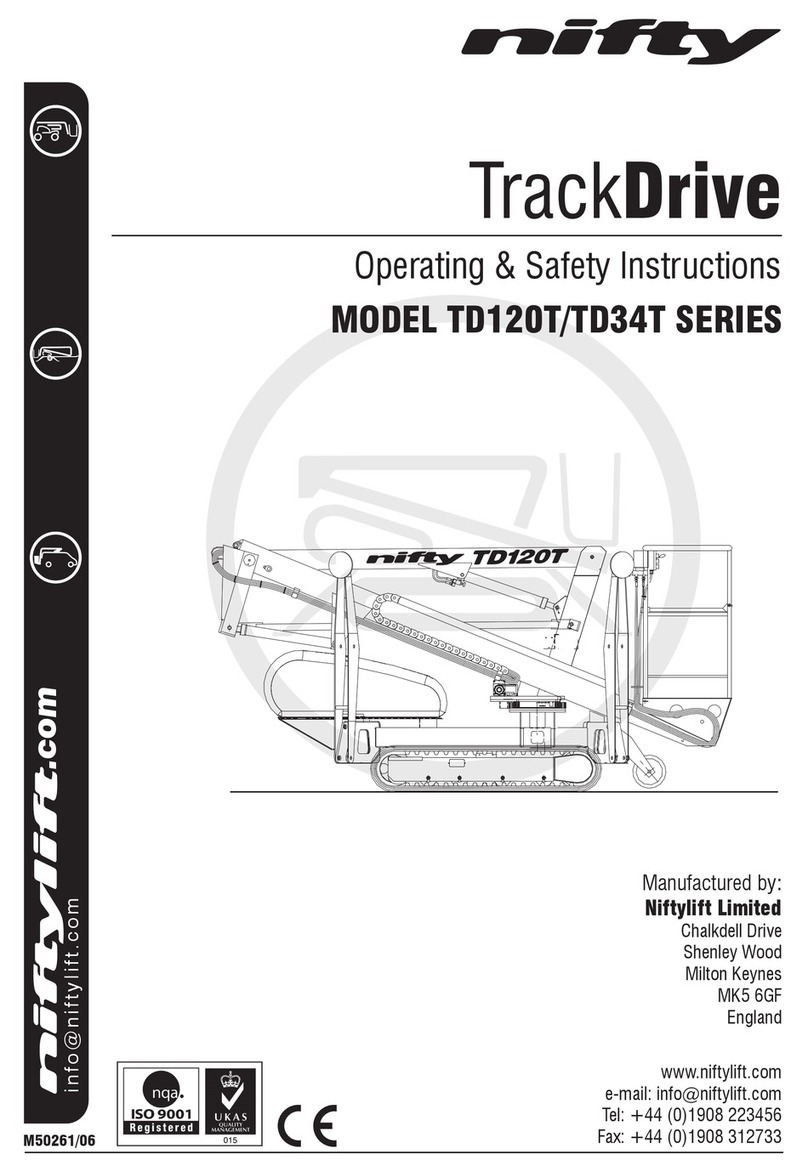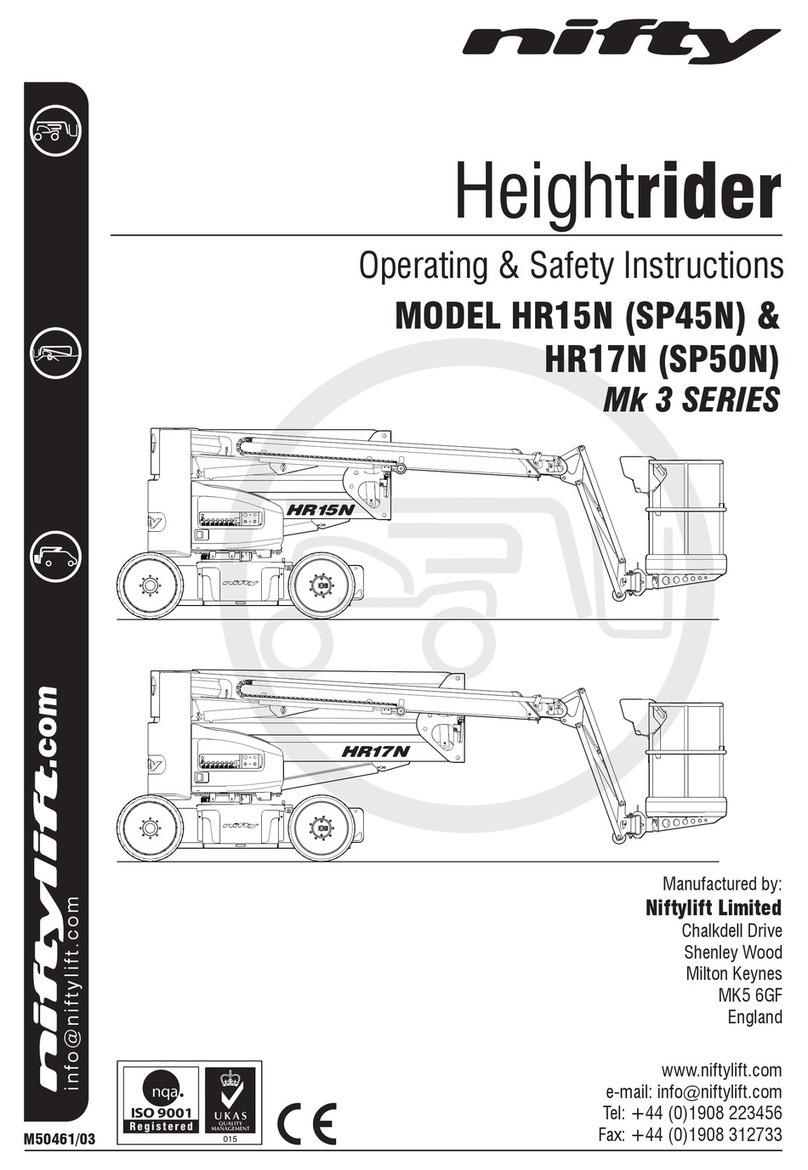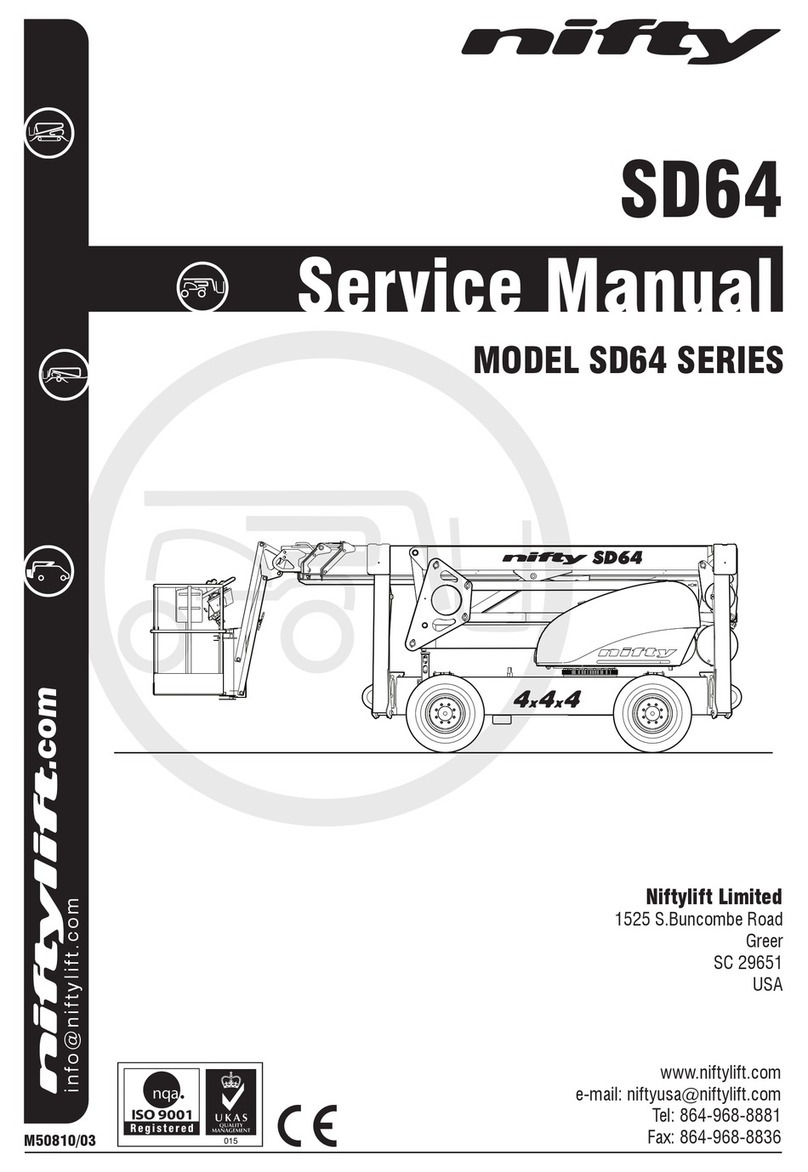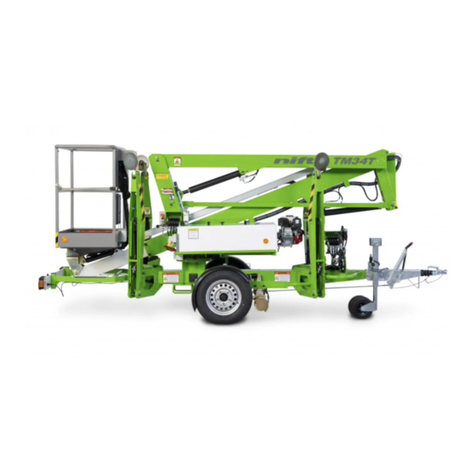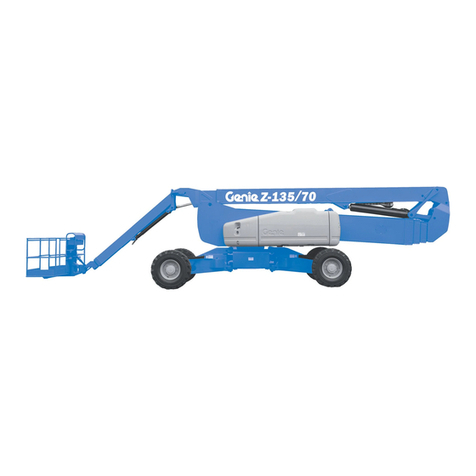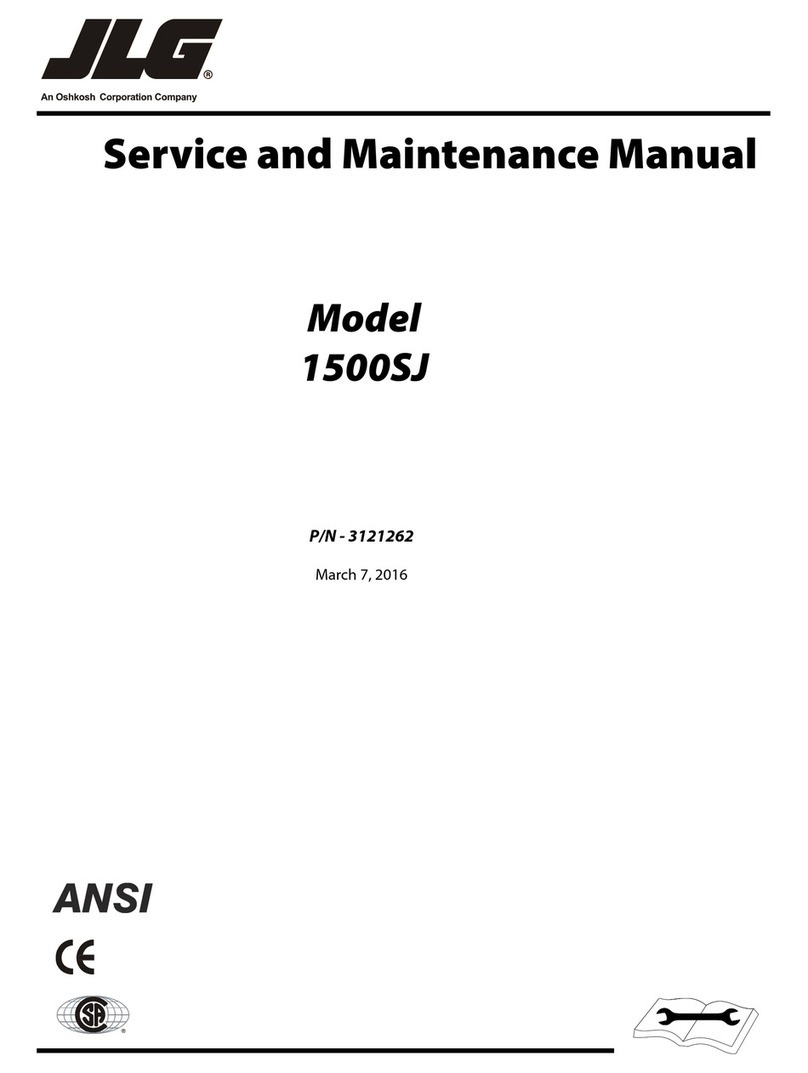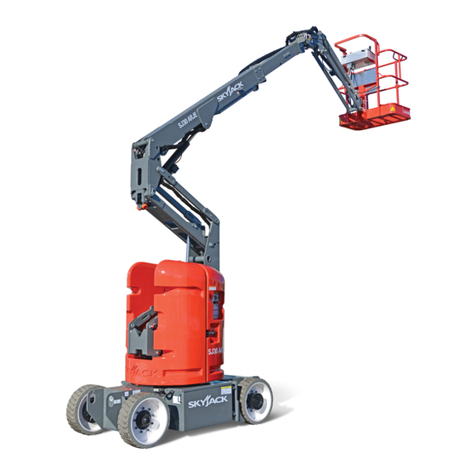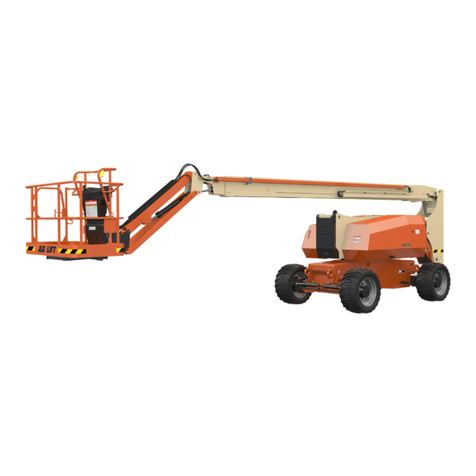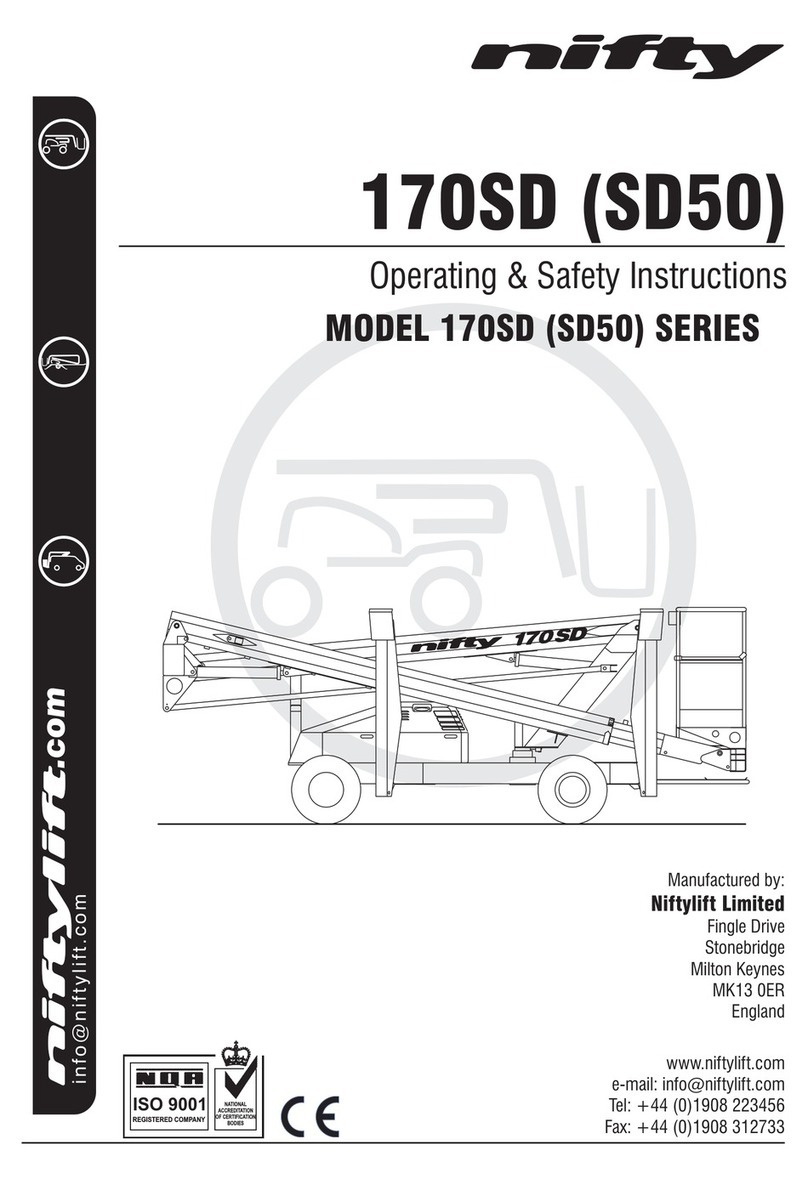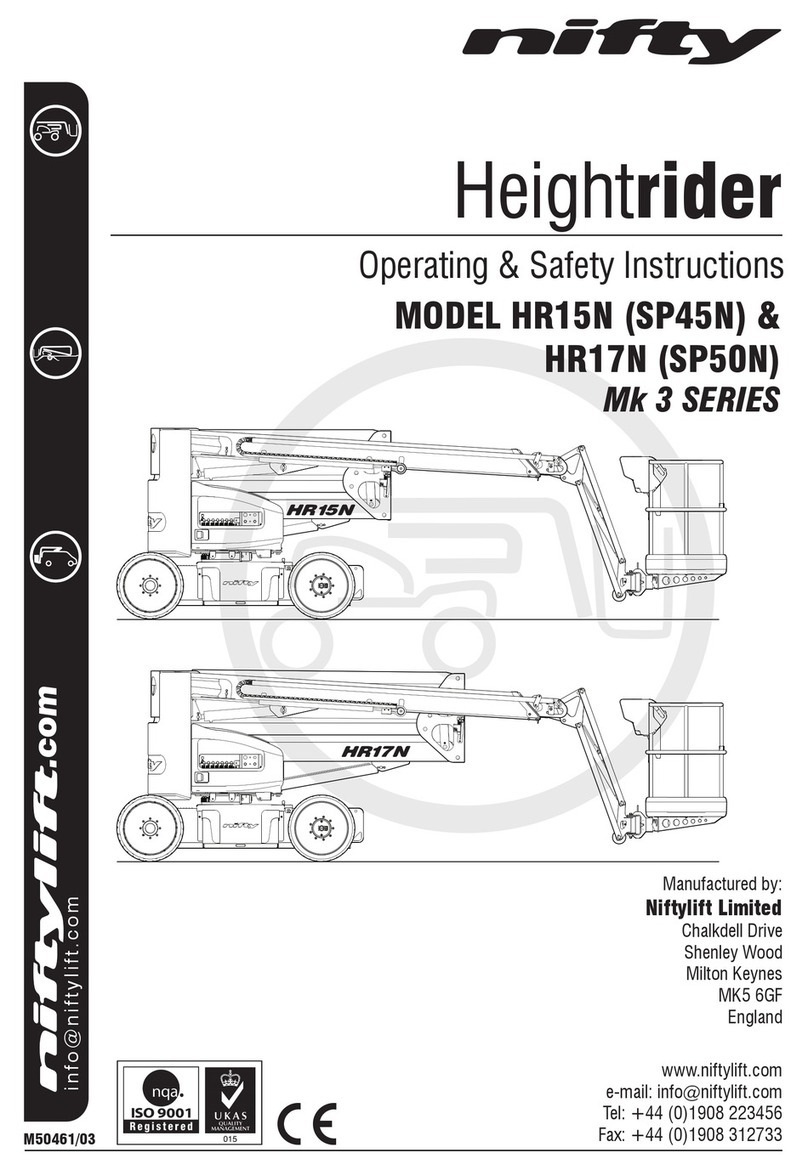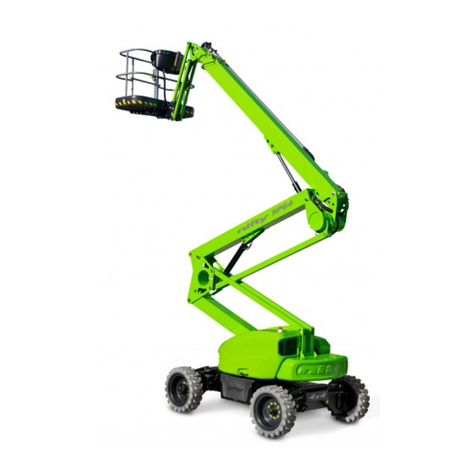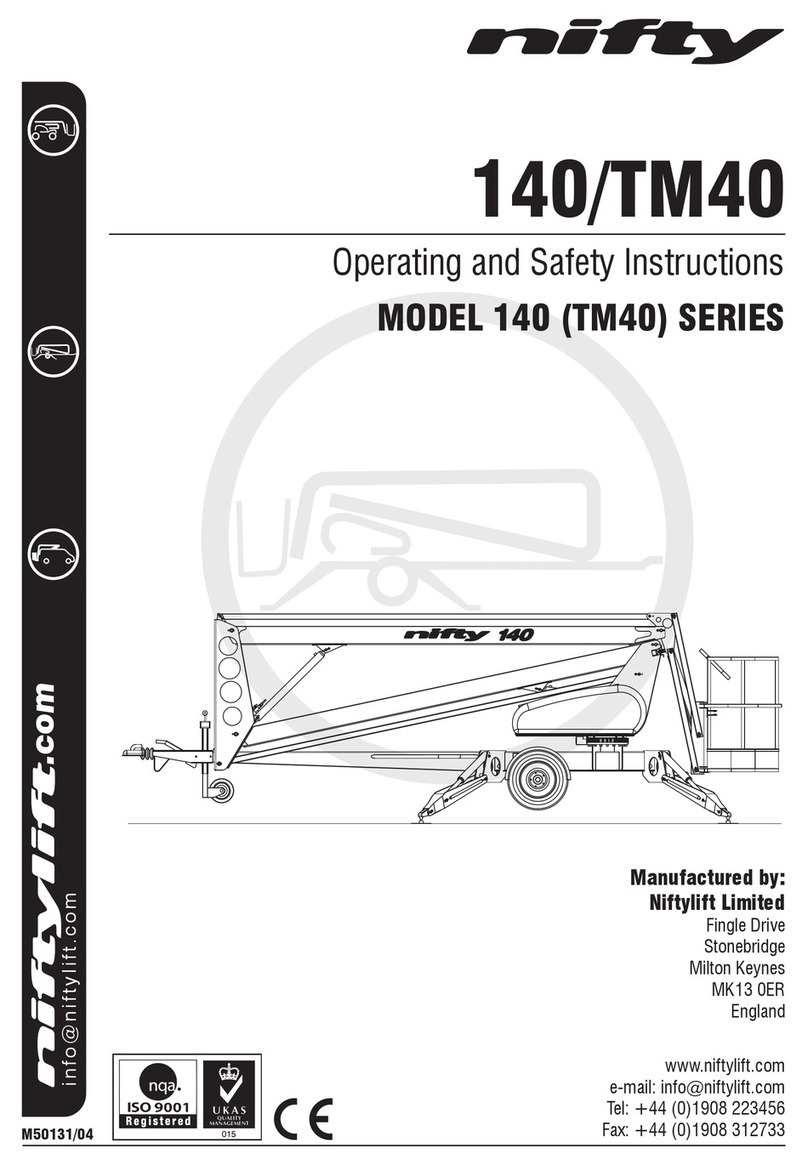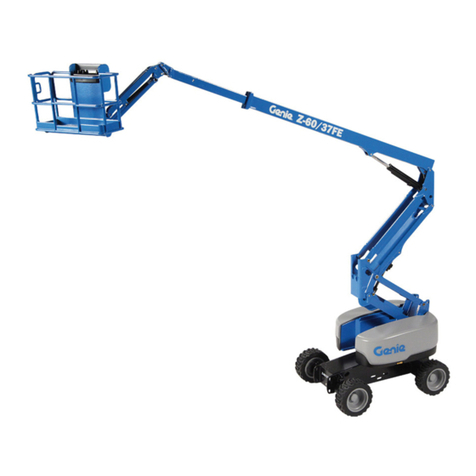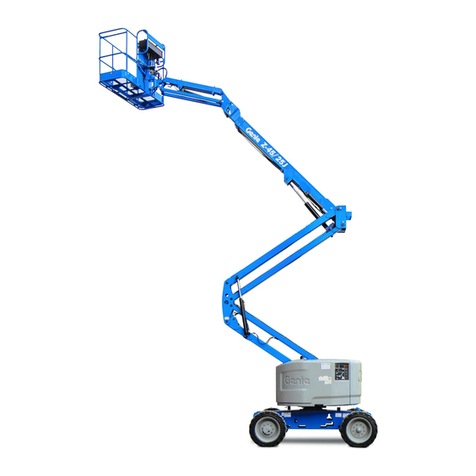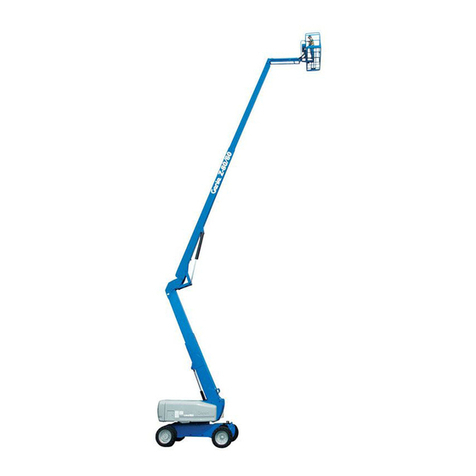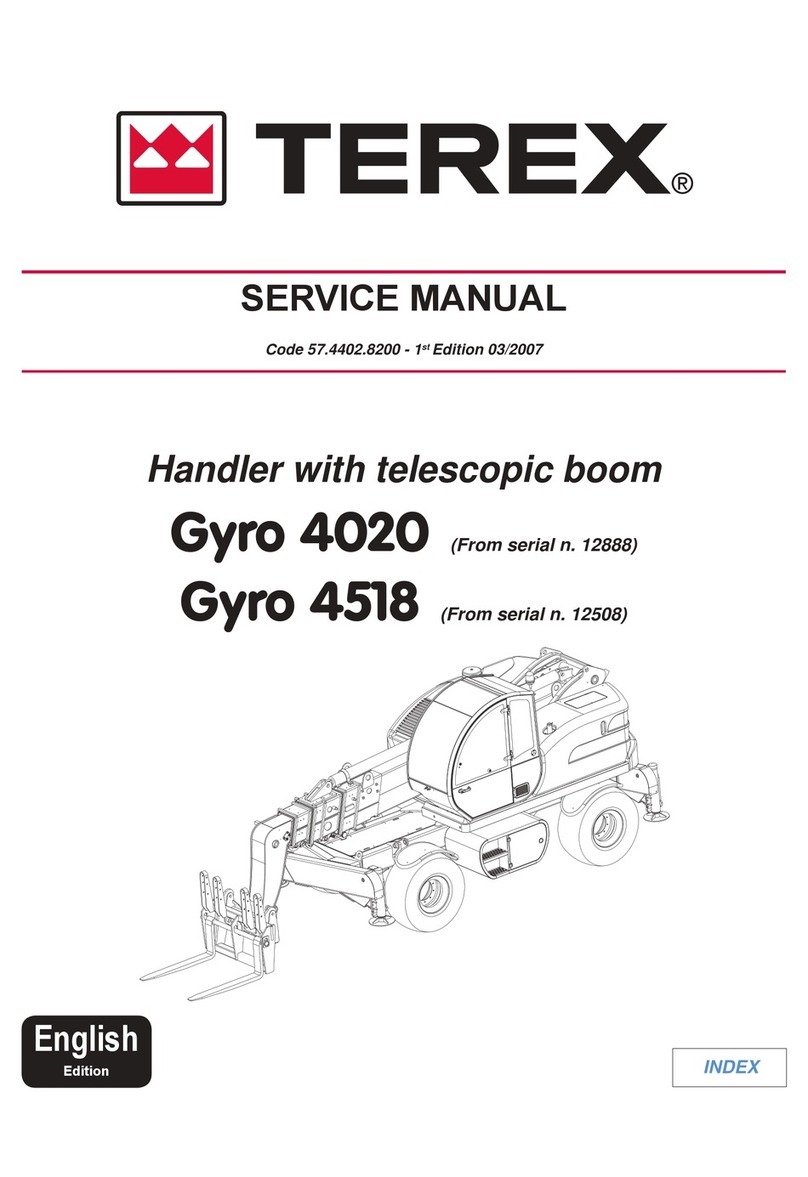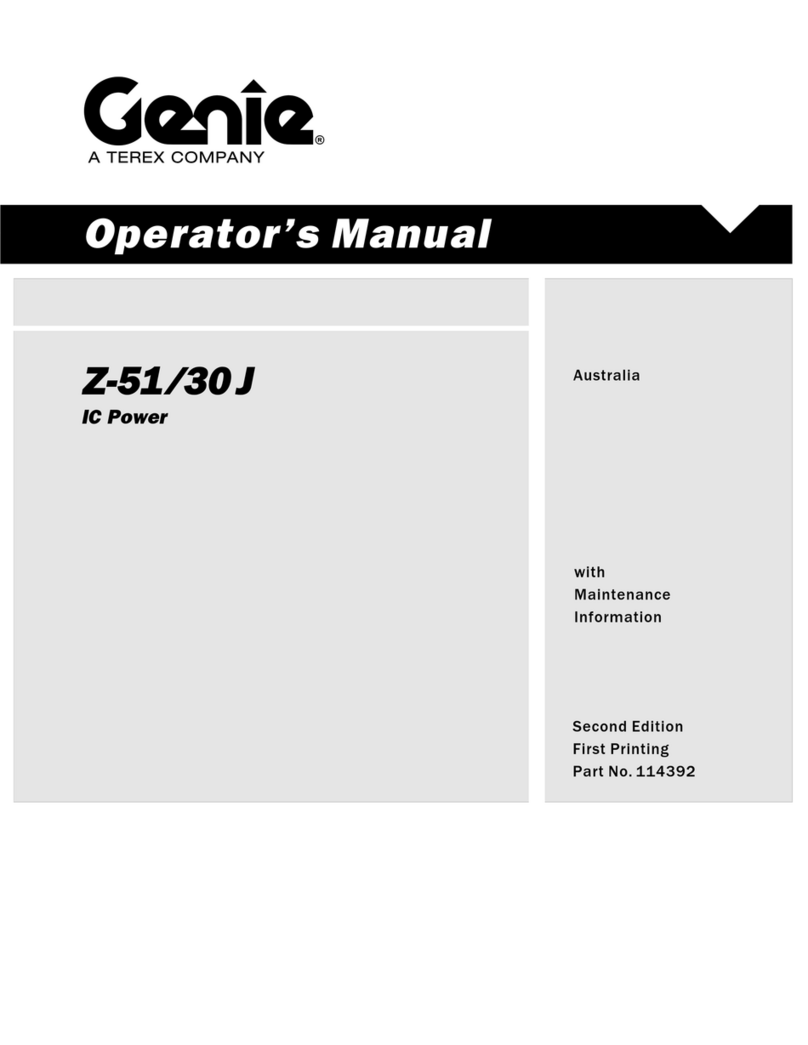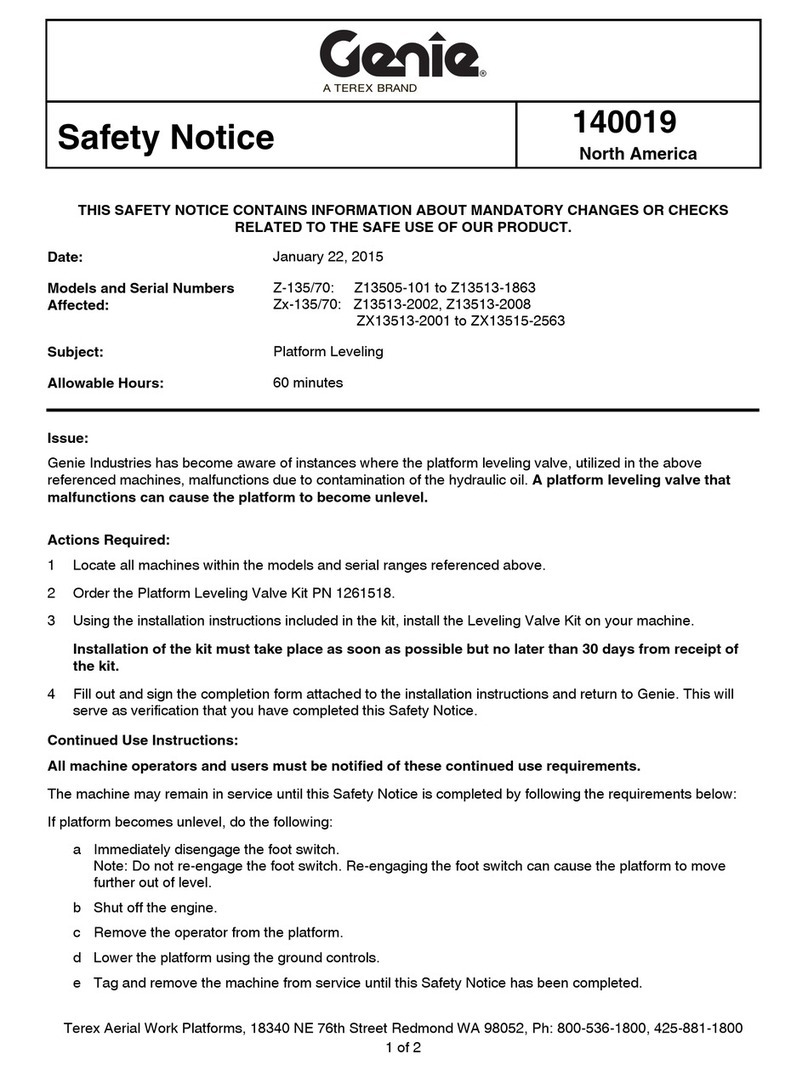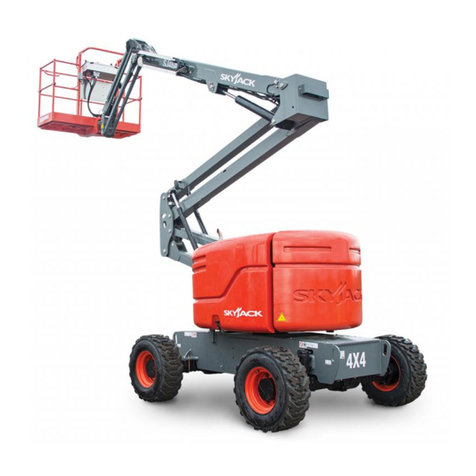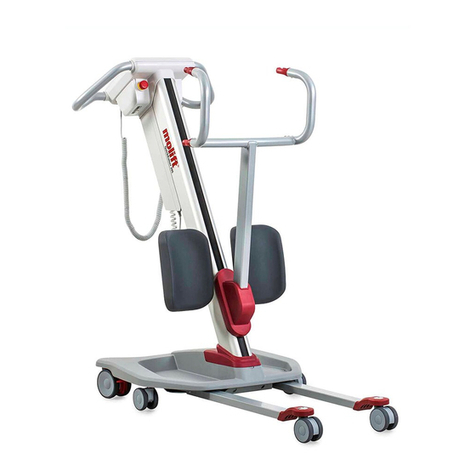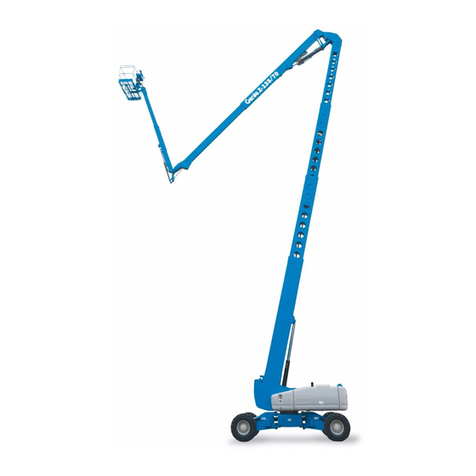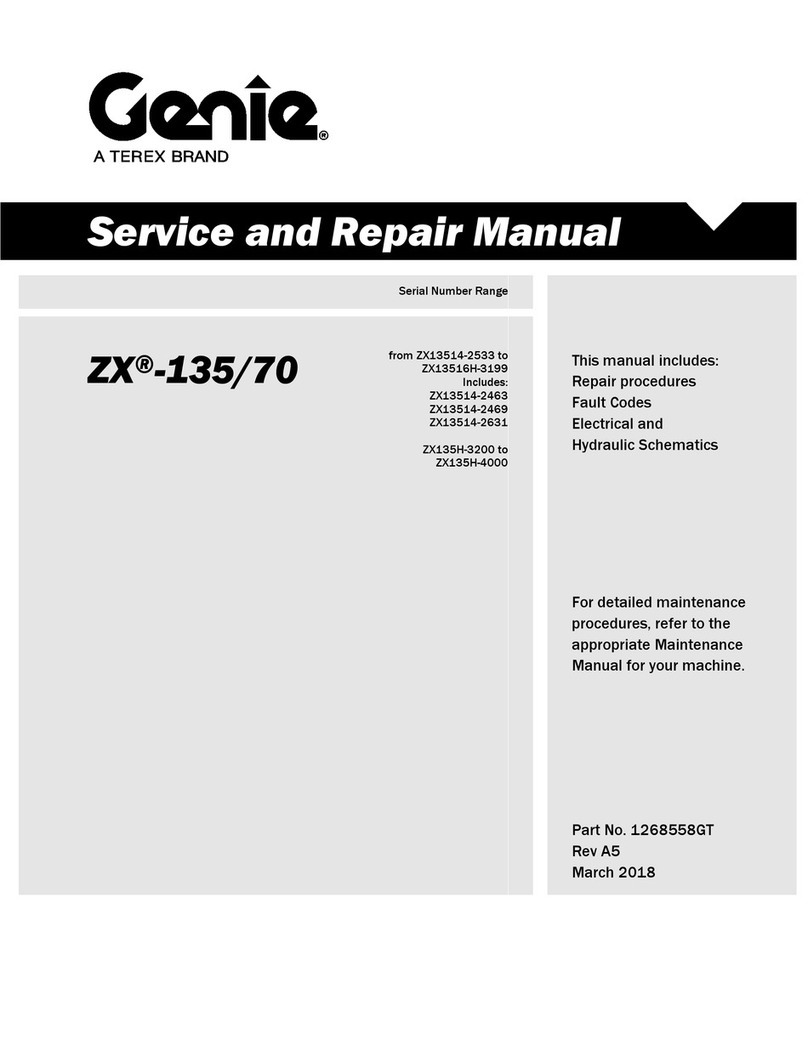
SP Series
Operating & Safety Instructions
USA –11/14
Original instructions
2.1.20 Stunt driving and horseplay, on or around the Niftylift, shall not be permitted.
2.1.21 When other moving equipment and vehicles are present, special precautions shall be taken to comply
with local ordinances or safety standards established for the work place. Warnings, such as but not
limited to, flags, roped off areas, flashing lights and barricades shall be used.
2.1.22 Before and during driving while the basket is elevated the operator shall maintain a clear view of the
path of travel, maintain a safe distance from obstacles, debris, drop offs, holes, depressions, ramps
and other hazards to ensure safe elevated travel. Maintain a safe distance from overhead obstacles.
2.1.23 Under all travel conditions the operator shall limit travel speed according to conditions of ground
surface, congestion, visibility, slope, location of personnel and other factors causing hazards of
collision or injury to personnel.
2.1.24 The Niftylift shall not be driven on grades, side slopes or ramps exceeding those for which the machine
is rated by the manufacturer.
2.1.25 It shall be the responsibility of the user to determine the hazard classification of any particular
atmosphere or location. Niftylifts operated in hazardous locations shall be approved and suitable for the
duty. (See ANSI/NFPA 505-1987 where applicable).
2.1.26 The operator shall immediately report to his supervisor any potentially hazardous location(s)
(environment) which become evident during operation.
2.1.27 If an operator encounters any suspected malfunction of the Niftylift or any hazard or potentially unsafe
condition relating to capacity, intended use or safe operation, he shall cease operation of the Niftylift
and request further information as to safe operation from his management, or owner, dealer or
manufacturer before further operation of the Niftylift.
2.1.28 The operator shall immediately report to his superior any problems or malfunctions of the Niftylift,
which becomes evident during operation. Any problems or malfunctions that affect the safety of
operation shall be repaired prior to continued use.
2.1.29 The boom and basket of the Niftylift shall not be used to jack the wheels off the ground.
2.1.30 The Niftylift shall not be used as a crane.
2.1.31 The Niftylift shall not be positioned against another object to steady the basket.
2.1.32 Care should be taken to prevent rope, electric cords and hoses from becoming entangled in the
machine
2.1.33 Batteries shall be recharged in a well-ventilated area free of flame, sparks or other hazards, which may
cause explosion. Highly explosive hydrogen gas is produced during the charging process.
2.1.34 When checking electrolyte levels great care should be taken to protect eyes, skin and clothing. Battery
acid is highly corrosive and protective glasses and clothing is recommended.
2.1.35 If the basket or elevating assembly becomes caught, snagged or otherwise prevented from normal
motion by adjacent structure or other obstacles, such that control reversal does not free the basket, all
personnel shall be removed from the basket safely before attempts are made to free the basket using
ground controls.
2.1.36 When the machine is not in use always stow the booms correctly. NEVER LEAVE
THE KEYS IN THE MACHINE,if it is to be left for any period of time. Use wheel
chocks if leaving on an incline.
